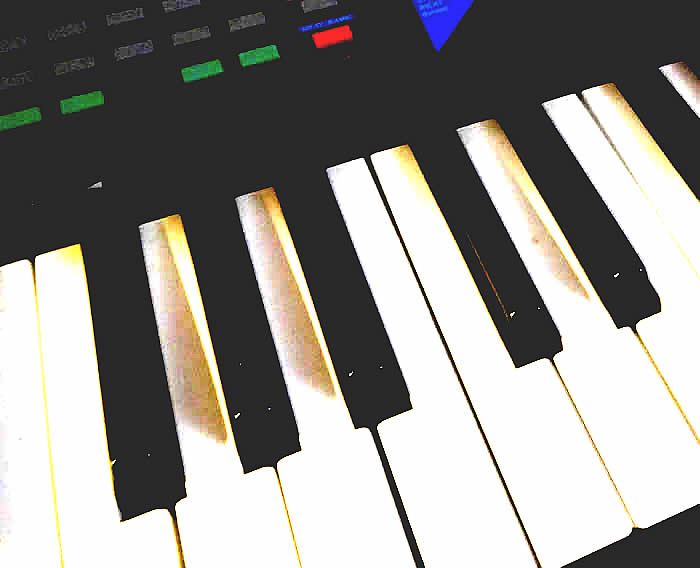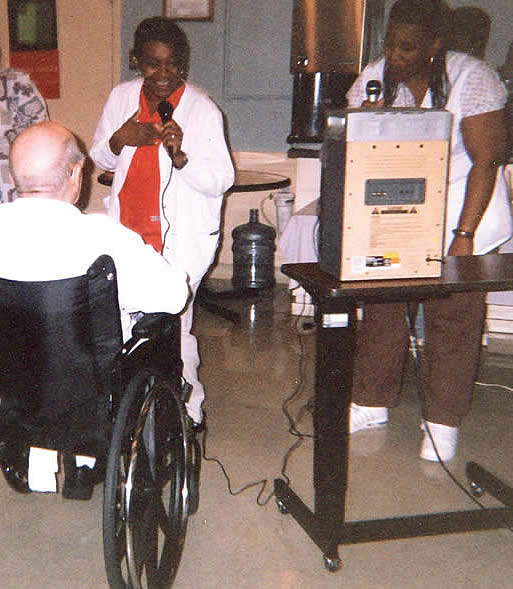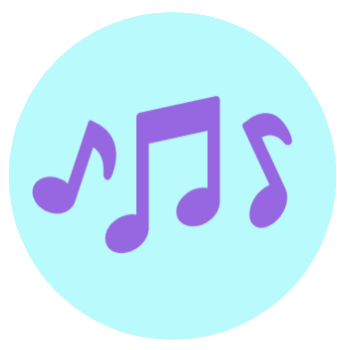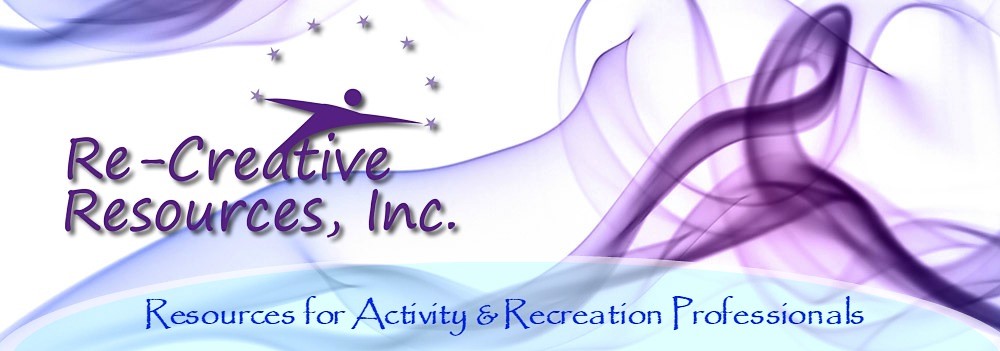Introduction
 In order to fully comprehend the words, music therapy, we must
first understand what it is, and secondly, what it’s all about. Music therapy is
the use and application of music to cure, alleviate, or stimulate various
senses. It is familiar from ancient mythology and has been increasingly
implemented in the treatment of physical as well as mental handicaps and
emotional disturbance, although there is little theoretical work to explain its
effectiveness. Although the healing powers of music are attested from ancient
times and in numerous cultures, the scientific understanding of such powers
remains limited. If we had lived in Greece about 2000 years ago, we would have
looked to music and musicians, along with physicians, for our total health care
needs. The nature of musical perception itself remains imperfectly understood.
Nevertheless, music has been found useful in working with people with a variety
of disorders. Its clinical use has been used in the treatment, although not
exclusively, of mental illness or mental deficits, or some type of mental
disability. In order to fully comprehend the words, music therapy, we must
first understand what it is, and secondly, what it’s all about. Music therapy is
the use and application of music to cure, alleviate, or stimulate various
senses. It is familiar from ancient mythology and has been increasingly
implemented in the treatment of physical as well as mental handicaps and
emotional disturbance, although there is little theoretical work to explain its
effectiveness. Although the healing powers of music are attested from ancient
times and in numerous cultures, the scientific understanding of such powers
remains limited. If we had lived in Greece about 2000 years ago, we would have
looked to music and musicians, along with physicians, for our total health care
needs. The nature of musical perception itself remains imperfectly understood.
Nevertheless, music has been found useful in working with people with a variety
of disorders. Its clinical use has been used in the treatment, although not
exclusively, of mental illness or mental deficits, or some type of mental
disability.
Music therapy may include singing, playing musical instruments,
dancing, clapping, using rhythm instruments, which all help to establish lines
of communication. Of the various elements of music, it is RHTYHM that is
acknowledged to be the vital therapeutic factor by virtue of its power to focus
energy and to bring structure into the perception of temporal order.
Music is definitely an expressive vehicle for the release of
emotional tension, bypassing difficulties of speech and language. Not only the
person with Alzheimer’s, but the general nursing home population, as well, may
benefit from its use. Therapy uses singing, various musical instruments such as
bells, xylophone, piano, autoharp, as well as a variety of rhythm
instruments.
Difference Between Music and Music
Therapy
There is a difference between music therapy, music education,
music lessons, recreation & entertainment. There are some similarities
however; music therapy has specific treatment goals and approaches. Although
residents can benefit from listening to an entertainer’s performance, they are
simply assimilating sounds to which they’ll either enjoy or not enjoy. Music
therapy goes beyond just having a person listen to different selections, and has
them become an active participant, incorporating a holistic approach; that of
listening and doing. Visit the American
Music Therapy Association website for more information on Music Therapy and
the qualifications of a Music Therapist.
The Benefits of Music and Music Therapy
We all know the power of music. Recreation Departments offer a
variety of music programs to provide residents the opportunity for relaxation,
cognitive stimulation, socialization, reminiscence, mental stimulation, and
quality of life. Music programs are instrumental to a well-balanced program of
activities and can be adapted to meet the individual needs and interests of
residents with varying functional abilities in a variety of health-care
settings. There are many benefits to music programs and music therapy such
as:
 |
- Increased socialization
- Enhanced self esteem and mood
- Decreased behavior problems
- Increased communication
- Increased physical abilities
- Increased endurance
- Improved motor coordination
- Increased attention span
- Increase opportunity for creative-expression
- Enhanced quality of life
|
Many residents I have worked with were seen tapping their feet,
getting up to dance in time to the music, clapping their hands, singing,
vocalizing, stomping their feet, etc. One particular resident, afflicted with
ALS, participated by tapping one finger on the control of her battery operated
wheelchair!
In addition, many of the residents had some degree of dementia
or Alzheimer’s. They would use their hands and rhythm instruments, such as
maracas, tambourines, and drums, and often times, keep the beat and rhythm! At
first I thought that maybe it was just their intuitive instincts that kept the
beat on target. However, I purposely would change the tempo of a song, and
noticed that the shift in meter was also being felt and noted aurally by the
residents, who in turn would change the beat to fit the tempo of the song. Once
again, it reflects back to RHYTHM being acknowledged to be the vital therapeutic
factor by virtue of its power to focus energy and to bring structure (meter and
tempo) into their perception.
There are so many ways in which Recreation professionals can
utilize music in programming.
Some examples include:
- Sing-a-longs
- Name that tune
- Music writing
- Rhythm band
- Music videos
- Karaoke
- Guest entertainers
- Resident choir
- Music appreciation
- Music games
- Music trivia
- Talent shows
-
Musical theater
|
-
Sensory stimulation to music
-
Tone chimes
-
Drumming circles
-
Music and movement
-
Music bingo
-
Music therapy sessions
-
One to one music
-
Cultural music
-
Spiritual music
-
Music and dining
-
Utilize music to enhance creativity during painting, arts,
-
Music and reminiscence
|
Music Programming Tips
- Inservice Recreation staff frequently on how they can implement various
musical activities
- Experiment with various styles and eras and learn to appreciate what the
residents appreciate
- Have staff design their own sing-a-long format
- Use Cassette tapes, CD’s, and DVD’s to increase your music library
- Just sing! In the field of recreation, there is no time for the inhibited
employee
- Be actively involved with the residents
- If an outside entertainer is performing, my staff is attempting to get the
residents to clap, getting them up to dance, having them sing, and to interact
anyway they can.
- It’s vitally important to have fun and to see that those in their charge are
having fun, as well.
 Whether we are dealing with one person or a group of residents, we need to: Whether we are dealing with one person or a group of residents, we need to:
- Face the resident(s)
- Make eye contact
- Take a hand while singing the words of a song
- Take a hand(s) while swaying gently to the music
- Initiate a clapping in time to the music. This should bring back a sense of
rhythm.
- Assist residents to stand, if at all possible, and do simple dance steps or
some type of movement to the music.
- I personally encourage resident-associations with particular songs. This
enhances and enriches the hearing of the music with personal memory attachments.
- “Do you recall dancing to a particular song?”
- “Where were you?”
- “With whom did you dance?”
- Connect sensory cues to increase arousal and alertness.
- Use sleigh bells with “Jingle Bells”
- Use flags for Patriotic Music
- Use a rose for “My Wild Irish Rose”
- If a resident is in the advanced stages of Alzheimer’s and is engaged in
self-stimulating rhythmic movement such as, rocking back and forth or rubbing
the arms of a chair, or eliciting sounds, one can make a bridge to his or her
world by mimicking these sounds and movements (in a constructive way). It may
bring the person’s attention to you and provide an opportunity to introduce an
actual song of a similar rhythm, and thus encourage vocalization. Make every
attempt to elicit some kind of response from an individual or group.
Bob Lowden has an undergraduate degree in Music
Education, Masters Degrees in Music History and Choral Conducting and a
Doctorate in Music Therapy. He spent many years performing piano and
vocals in various settings including long-term care. Contact Bob at musicbob@comcast.net or rlowden@franklincarecenter.com
**READ MUSIC MOMENT - A TRUE STORY**
|







